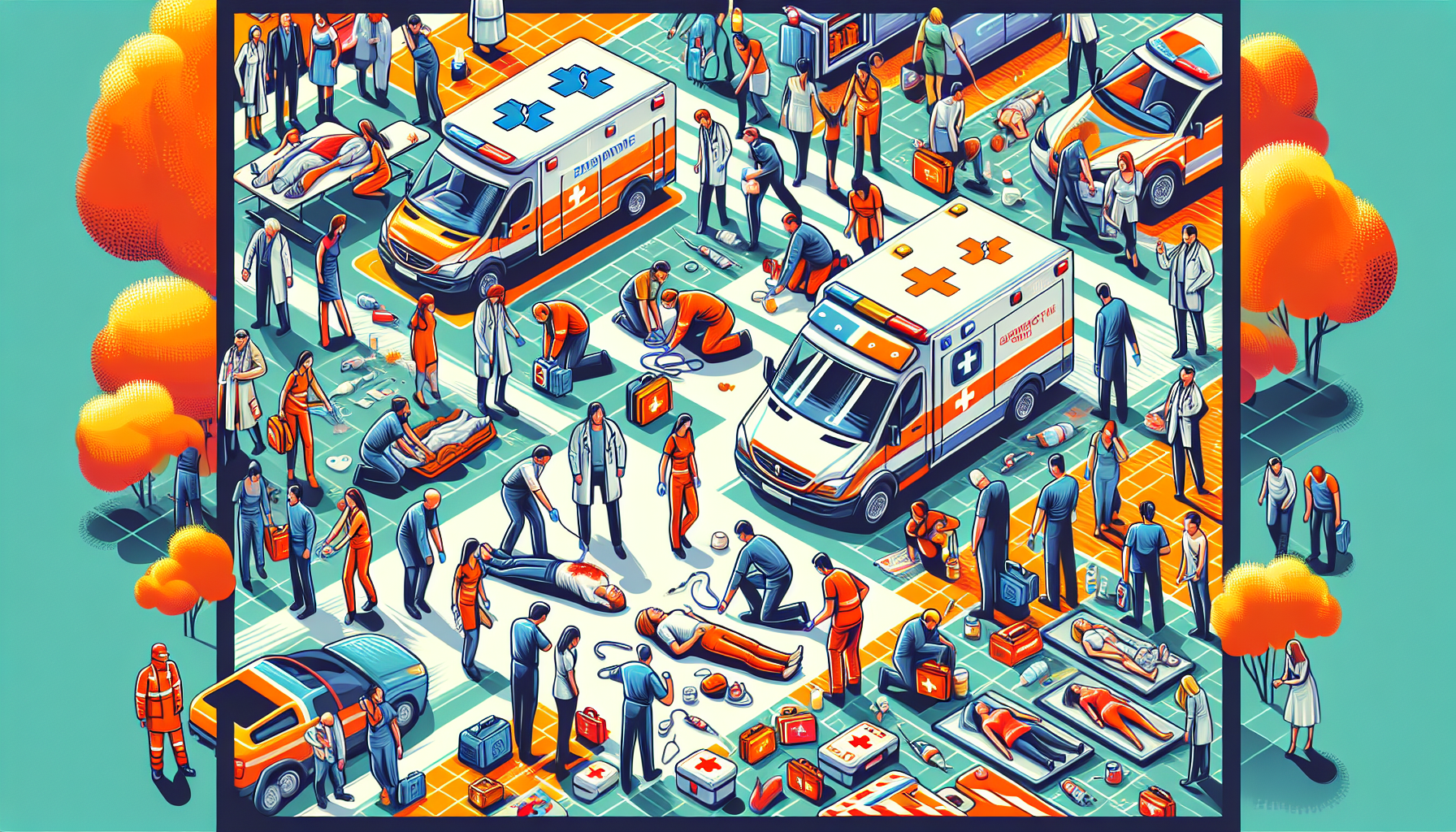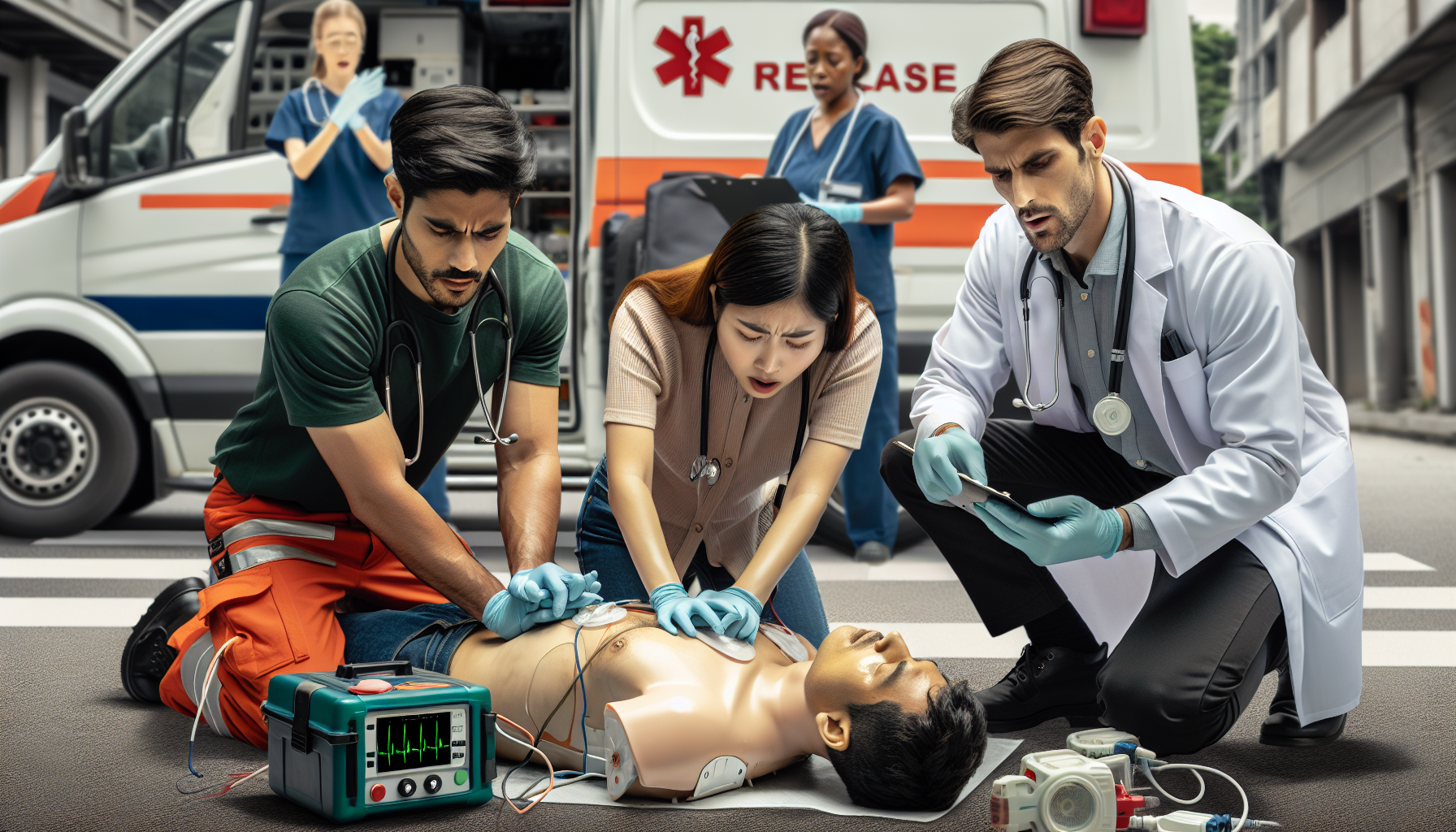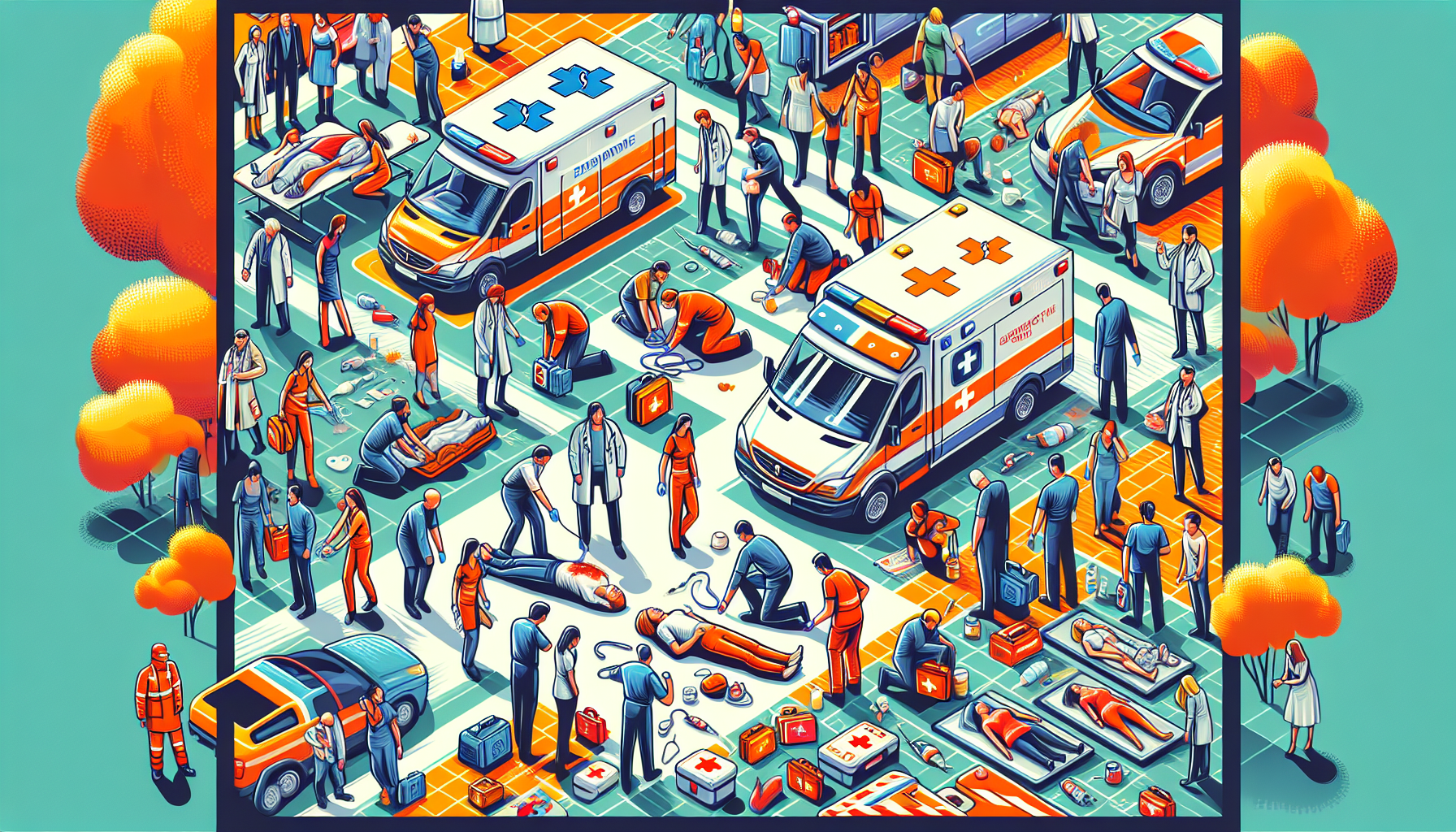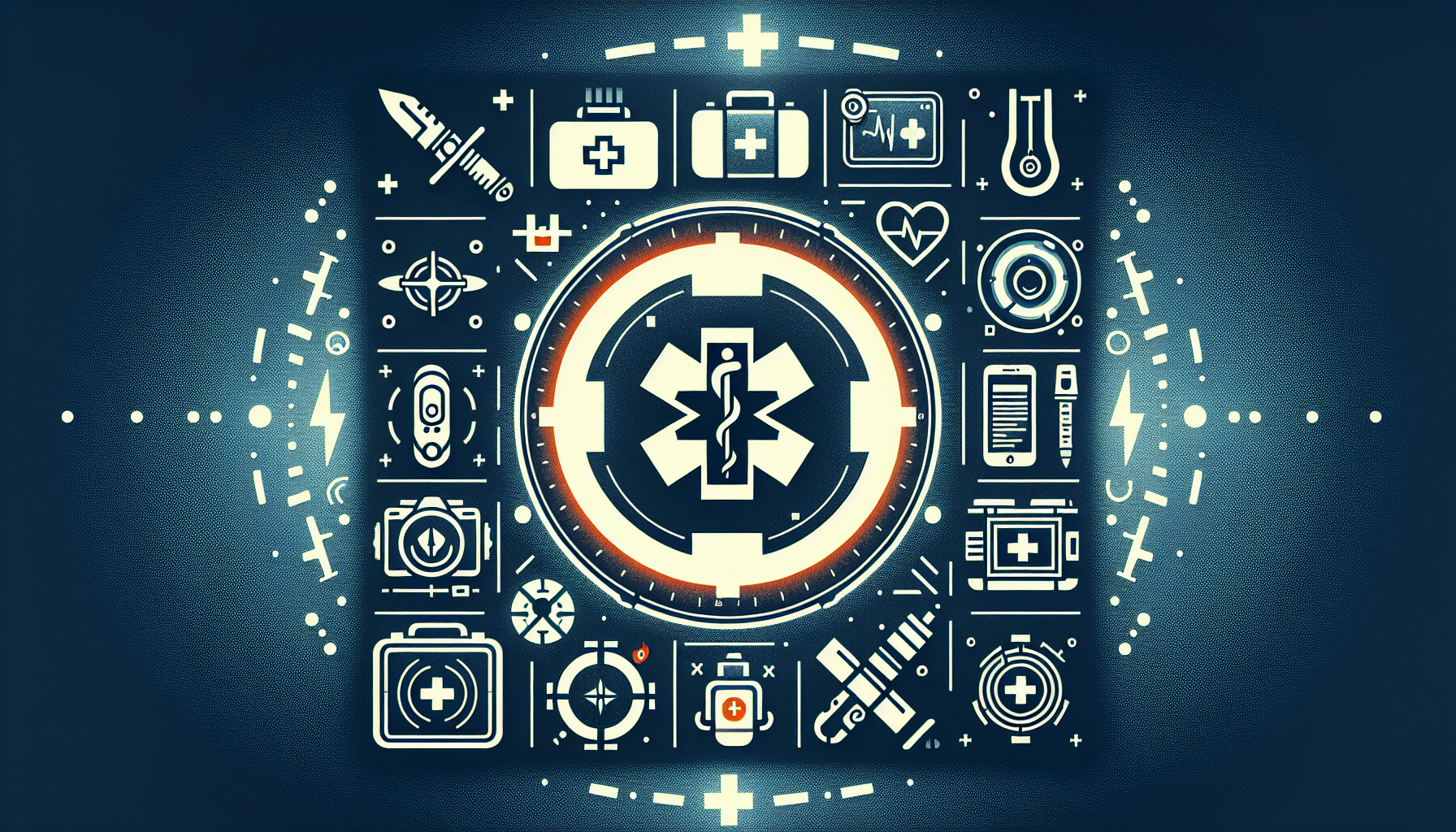Key Steps To Take In A Medical Emergency
In a medical emergency, it’s crucial to know what actions to take in order to provide immediate assistance to someone in need. Whether it’s a sudden injury or a life-threatening situation, being prepared can make a significant difference in saving lives. This article will guide you through the essential steps to take during a medical emergency, equipping you with the knowledge and confidence to lend a helping hand when it matters most. From assessing the scene to contacting emergency services and administering basic first aid, these key steps will empower you to be an effective first responder and potentially be the difference between life and death.

1. Stay Calm In A Medical Emergency
Recognize the importance of staying calm
In any medical emergency, staying calm is of utmost importance. It can be natural to feel anxious or overwhelmed, but it’s crucial to remember that maintaining a calm demeanor will help you think more clearly and make rational decisions. Panic can cloud your judgement and hinder your ability to help the person in need. Take a deep breath and remind yourself that your presence and calmness can make a significant difference in the situation.
Keep a clear mind to make rational decisions
When faced with a medical emergency, it’s essential to keep a clear mind. Taking a moment to assess the situation objectively will allow you to make rational decisions. Panic can lead to impulsive actions or delayed responses, both of which can be detrimental in an emergency. By staying calm, you can evaluate the situation more effectively and take appropriate steps to ensure the safety and well-being of the individual requiring assistance.
2. Assess the Situation
Quickly evaluate the nature of the emergency
Once you have attained a level of calmness within yourself, it’s time to quickly evaluate the nature of the emergency. Determine whether it is a life-threatening situation, such as cardiac arrest or severe bleeding, or if it is a less severe condition that requires medical attention but is not immediately life-threatening. This assessment will help you prioritize your actions and provide the necessary aid accordingly.
Determine the severity of the situation
After assessing the nature of the emergency, it is crucial to determine the severity of the situation. Evaluate the individual’s condition and look for signs that indicate how critical it is. If they are conscious and their vital signs appear stable, the situation may be less severe. However, if they are unconscious, not breathing, or experiencing extensive bleeding, it is likely a more critical situation that requires immediate attention.
Assess any immediate dangers or hazards
In addition to evaluating the individual’s condition, it is important to assess any immediate dangers or hazards in the surrounding environment. For example, check for hazards such as fire, electrical wires, or unstable structures that could pose a threat to the individual’s safety. By identifying and addressing these risks promptly, you can minimize further harm and create a safer environment for both the person in need and anyone providing assistance.
3. Call for Help
Contact emergency services
Once you have evaluated the situation and determined that it requires professional medical assistance, call emergency services immediately. Dial the emergency number specific to your country (such as 911 in the United States) and provide them with accurate and concise information about the situation. Be prepared to provide your location, a brief description of the emergency, and any details that can help emergency responders understand the urgency and severity of the situation.
Provide clear and concise information
When communicating with emergency services, it is crucial to provide clear and concise information. Speak clearly, stay calm, and relay the necessary details accurately. State the symptoms or injuries observed, the individual’s current condition, and any concerns or immediate dangers you have identified. Clear and concise information will allow emergency services to dispatch the appropriate medical personnel in a medical emergency and resources to the scene promptly.
Follow any instructions given by the operator
After contacting medical emergency services, the operator may provide you with instructions over the phone. It is essential to listen carefully and follow their guidance. The operator is trained to provide immediate assistance and may provide life-saving instructions such as performing cardiopulmonary resuscitation (CPR) or controlling bleeding. Stay on the line until instructed otherwise and be ready to provide updates if the situation changes.
4. Provide First Aid
If trained, administer basic first aid
If you have received training in basic first aid techniques, you may be able to provide immediate assistance while waiting for medical professionals to arrive. Basic first aid skills can help stabilize the individual’s condition and potentially save their life. These skills may include CPR, using an automated external defibrillator (AED), controlling bleeding, or applying proper wound care. Remember to only perform procedures you are trained in to avoid causing further harm.
Check for breathing and circulation
When providing first aid, it is crucial to check for breathing and circulation. If the individual is not breathing or their breathing is irregular, performing CPR may be necessary to maintain oxygen flow to vital organs until medical help arrives. Additionally, check for a pulse to determine if the individual has a sufficient circulation. Basic first aid training often covers techniques for assessing and addressing breathing and circulation issues.
Control any bleeding
In situations where there is bleeding, controlling it swiftly is crucial. Apply direct pressure to the wound using a clean cloth or your hands (if gloves are available) to minimize blood loss. Elevate the injured area if possible, as it can help reduce blood flow to the area. If bleeding is severe and direct pressure does not suffice, consider using a tourniquet as a last resort while waiting for professional medical assistance.
Stabilize any fractures or injuries
If the individual has suffered fractures or injuries that do not require immediate medical intervention, you can help stabilize them. Support the injured area by using makeshift splints or by immobilizing the area with towels, clothing, or rigid objects. Stabilizing the injuries can help prevent further damage and alleviate pain while awaiting professional medical assessment and treatment.

5. Stay with the Person
Do not leave the individual unattended
Once you have provided initial first aid, ensure that you do not leave the individual unattended. Remaining by their side can offer comfort and reassurance, both of which are vital during a medical emergency. It also allows you to monitor their condition closely and provide real-time updates to the medical personnel when they arrive. Your presence can have a calming effect on the individual and contribute to a sense of security.
Offer reassurance and comfort
In a medical emergency, the person in need may experience fear, pain, or panic. Offering reassurance and comfort can help alleviate these distressing emotions. Speak calmly and compassionately, letting them know that help is on the way and that they are not alone. Reassure them that you will stay with them until medical professionals arrive and do your best to address any immediate needs or concerns they may have.
Monitor their condition and provide updates to medical personnel
While staying with the individual, continue monitoring their condition closely. Pay attention to changes in their breathing, level of consciousness, or other symptoms they may be experiencing. It is essential to communicate any updates or changes in the individual’s condition promptly to the medical personnel when they arrive. This information can aid in providing accurate and timely medical interventions.
6. Gather Information
Collect relevant details about the medical emergency
While waiting for medical professionals to arrive, gather as much relevant information about the medical emergency as possible. Note the details of the incident, symptoms exhibited by the individual, and any other pertinent facts that may assist the medical team. This information can provide valuable insights into the situation and help medical professionals make prompt and accurate decisions regarding the individual’s care.
Note any pre-existing medical conditions or allergies
If the individual has any pre-existing medical conditions or known allergies, it is important to note them down. This information can significantly impact the type of medical intervention required and the medications that can be safely administered. If the person is unable to communicate this information themselves, check for medical alert bracelets, necklaces, or cards that may provide insights into their medical history.
Gather information about medications being taken
In a medical emergency, knowing the medications the individual is taking can be crucial. It helps medical professionals assess potential interactions or complications. If possible, gather information about the medications being taken, including their names, dosages, and frequencies. This information can contribute to providing accurate medical care and avoiding any adverse reactions or complications during the medical emergency.
7. Clear the Area
Remove any unnecessary obstacles
Creating a clear and unobstructed area is vital in a medical emergency. Remove any unnecessary obstacles that could impede the arrival or movement of emergency responders. Clear furniture, clutter, and other objects that may hinder access to the individual or make it difficult for medical professionals to perform their duties swiftly.
Create a safe and accessible space for medical professionals
Prepare a safe and accessible space for medical professionals to work in. Ensure there is sufficient room for them to maneuver and access the individual comfortably. If necessary, provide assistance in moving furniture or clearing the area to facilitate their work. Additionally, ensure there is appropriate lighting in the area, allowing the medical team to assess and treat the individual effectively.
Ensure a clear pathway for medical emergency responders
If the medical emergency occurs in a building or any location that requires emergency responders to navigate stairs or hallways, ensure there is a clear pathway for them to reach the scene quickly. If possible, assign someone to guide and direct the medical emergency responders to the location. Time is of the essence in a medical emergency, so minimizing delays and obstacles can make a significant difference in the individual’s outcomes.
8. Communicate Effectively
Provide accurate information to medical personnel
When medical personnel arrive at the scene, provide them with precise and concise information about the medical emergency. Relay the facts you have gathered about the incident, the individual’s condition, and any other relevant details. By accurately communicating the information, you enable the medical team to assess the situation quickly and make informed decisions regarding the required medical interventions.
Articulate symptoms, events, and observations
In addition to providing accurate information, it is essential to articulate the symptoms, events, and observations that have occurred during the medical emergency. Describe any changes in the individual’s condition, the timeline of events, and any patterns or abnormalities you have noticed. Your detailed descriptions can aid medical personnel in diagnosing and treating the individual effectively.
Use clear and concise language
To ensure effective communication, use clear and concise language when relaying information to medical professionals. Avoid using jargon, abbreviations, or technical terms that may not be easily understood. Use everyday language to describe the situation to the best of your ability, facilitating a smooth and efficient exchange of information between yourself and the medical team.
9. Follow Medical Instructions
Adhere to the directions given by medical professionals
Medical professionals will provide instructions for the individual’s care and treatment. It is important to listen carefully and adhere to these directions. Follow any specific actions or medications they recommend, as they are trained to provide the appropriate interventions for the situation. By following their instructions, you contribute to the person’s well-being and increase the likelihood of a positive outcome.
Take prescribed medications as instructed
If the individual has been prescribed medications as part of their treatment, ensure they take them as instructed by the medical professionals. Medications play a vital role in the recovery process, and adherence to prescribed dosages and frequencies is essential. Encourage the individual to follow their medication regimen and monitor their progress closely.
Follow up with recommended tests or appointments
Medical professionals may recommend follow-up tests or appointments to further assess the individual’s condition or monitor their progress. It is crucial to prioritize these recommendations and ensure they are carried out. Additional tests or appointments can provide valuable insights into the individual’s health and aid in ongoing treatment or recovery planning.
10. Seek Emotional Support
Acknowledge and address your own emotions
Witnessing or being part of a medical emergency can be a stressful and emotionally overwhelming experience. It’s essential to acknowledge and address your own emotions during and after the incident. Allow yourself to process and express any feelings of fear, anxiety, or sadness. Engaging in self-care activities such as exercising, talking to friends or loved ones, or engaging in hobbies can help manage your emotions effectively.
Reach out to friends, family, or support groups
During challenging times, reaching out to your support system can provide immense comfort and emotional support. Share your experience with trusted friends, family, or support groups who can lend a listening ear and offer advice or empathy. Connecting with others who have been through similar situations can provide a sense of solace and validation, knowing that you are not alone in your experience.
Consider counseling or therapy if needed
If you find that the emotional impact of the medical emergency lingers or significantly affects your daily life, consider seeking professional counseling or therapy. Trained therapists can help you navigate your emotions, provide coping strategies, and support your overall well-being. Seeking professional help is not a sign of weakness but rather a proactive step towards healing and resilience.
In conclusion, facing a medical emergency can be a daunting experience, but following these key steps can help you navigate through it more effectively. Stay calm, assess the situation, call for help, provide first aid if trained, stay with the person, gather information, clear the area, communicate effectively, follow medical instructions, and seek emotional support. Through these actions, you can play a crucial role in ensuring the well-being and safety of those in need while taking care of yourself in the process. Remember, staying calm, staying informed, and staying connected are the pillars of effective medical emergency response.




